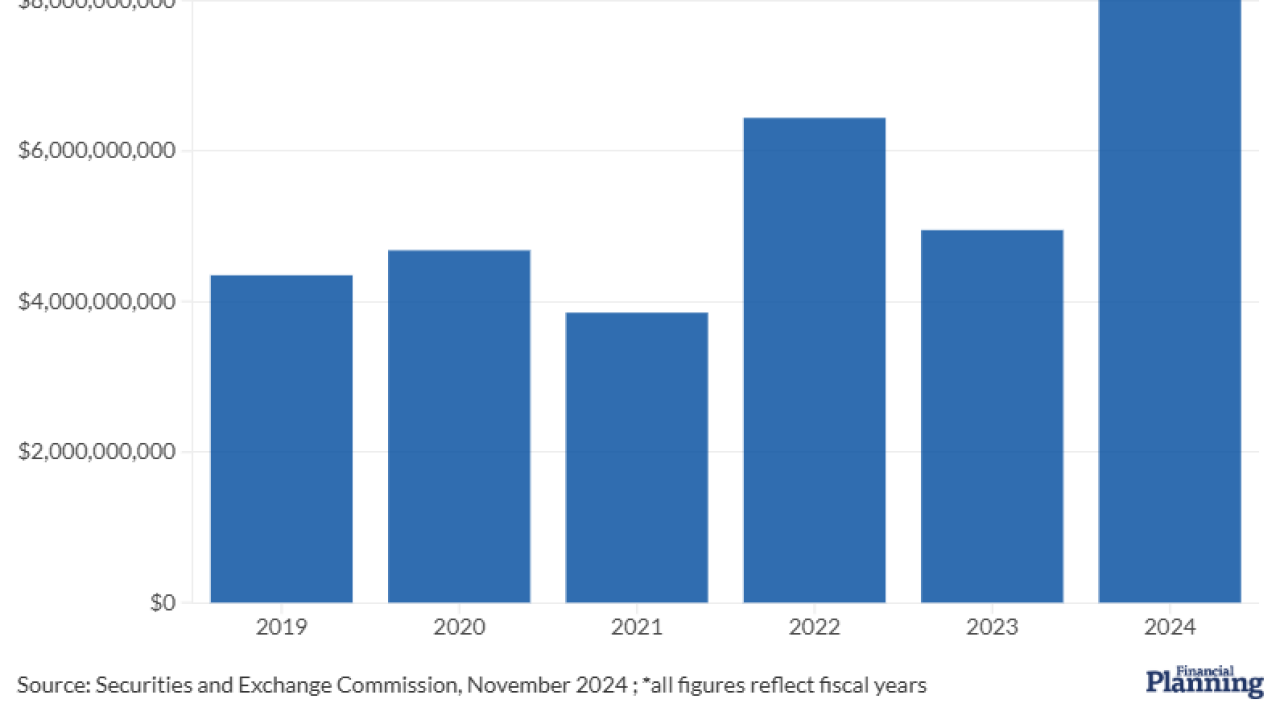“Yes, you can do it.”
That’s what I told an adviser recently when he asked if his client could use his IRA funds to purchase real estate.
“Yes, you can do it," is the answer I gave to another adviser asking a similar question the week before that, and another one the week before that.
This topic of investing in unconventional assets through an IRA is coming up weekly for me, if not even more frequently. Yes, you can invest IRA funds in non-conventional assets, including real estate, closely held stock, equipment leasing, farming interests, private equity investments and virtual currency. However, there are risks involved.
Advisers working with clients who wish to make non-conventional IRA investments must understand when a client might be entering a tax trap. They should know the answer to the question: When does a transaction become an unintended distribution because the IRA owner has too much control over the funds?

The following cases can help advisers recognize some of the potential dangers involved in this investment strategy.
FORCING THE ISSUE
California resident Guy Dabney wanted to buy land in his Schwab IRA, but Schwab refused to hold the investment. IRA custodians can opt not to hold such IRA investments. Clients who are interested in non-traditional IRA investments should look into vehicles such as self-directed IRAs.
Dabney’s mistake was to force the issue with Schwab, rather than finding an IRA custodian willing to hold the land, then doing a direct transfer from the Schwab IRA to the new custodian. That would have constituted a tax-free direct rollover that allowed the new custodian to purchase the land within the IRA.
Instead, Dabney wired funds from his IRA directly to the title company handling the sale of the land, and instructed them to title the land in the name of “Guy M. Dabney Charles Schwab & Co. Inc Cust. IRA Contributory.”
Schwab issued Dabney a 1099-R for his distribution and, in error, the title company issued the title to the land in Dabney’s name. Later, the IRS challenged Dabney’s return for not including the distribution used to purchase the land. The two sides ended up in court, and the IRS was the victor.
A BOTCHED PARTNERSHIP PLAN
In a private letter ruling, an unsuccessful attempt to invest IRA funds in a business ended up in a taxable IRA distribution. In this case, the IRA owner said his plan was to have this IRA purchase the shares of a partnership interest and continue to be held by his IRA custodian.
His adviser prepared the paperwork for the client to sign. The IRA custodian issued a check payable to the partnership. The partnership agreement indicated the interest was held by the taxpayer’s IRA.
However, the custodian was unable to hold the partnership interest and, as a result, issued a Form 1099-R, treating the distribution as taxable.
REAL ESTATE MISTAKES
In another private-letter case, a do-it-yourself IRA investor’s SDIRA mishap led to a taxable IRA distribution. The taxpayer wanted to invest her IRA funds in real estate and other alternative investments. Her plan was to use amounts in her existing IRA to fund a new IRA, which she believed was a self-directed IRA that would allow these types of investments.

To put her plan in action, she took a distribution from her IRA and rolled it over to a new IRA. Just days after the rollover, she took four distributions from the new IRA.
After receiving a 1099-R for the distributions from her new IRA, she then did a little belated investigating – and learned some bad news.
Her new IRA custodian did not offer self-directed IRAs. She liquidated the alternative investments and deposited the funds back into an IRA. She also requested a PLR to extend the 60-day rollover deadline. She said her failure to accomplish a rollover within the 60 days was due to her belief that the alternative investments were purchased within the IRA, or rolled over into an IRA within 60 days.
Further, she argued that she never intended to take a distribution, and that, if the IRA custodian had purchased the alternative investments on behalf of the IRA instead of making distributions, the funds would not have been taxable.
The IRS denied the request, stating that the distributed funds must be included in the taxpayer’s income for the year, and that the deposits to her IRA would be considered excess contributions. In addition, the IRS said she violated the once-per-year IRA rollover rule.

The IRS also shot down her argument that there were no distributions from the IRA. In fact, the IRS said the IRA custodian did not offer self-directed IRAs and the distributions were made to purchase the alternative investments. Further, the IRS said that, if there were no distributions, the taxpayer would not be seeking a waiver.
This PLR also shows some of the risks of using self-directed IRAs for alternative investments. Here, the taxpayer went wrong in two ways.
1. First, she did not do her homework and find out what investments were allowed by the IRA custodian.
2. She also misunderstood how self-directed IRAs work. When the IRA issued checks made payable to a title company and a limited liability company, these were distributions out of the IRA. She was no longer investing within her IRA. Those funds were no longer IRA funds and, due to the violation of the once-per-year IRA rollover rule, they were not eligible to go back into another traditional IRA as a rollover.
DOING IT RIGHT – BUT STILL WITH RISKS
A recent Court of Appeals case illustrates the right way to set up such accounts – but shows the IRA owner was still acting in a risky manner.
Raymond McGaugh had an IRA with Merrill Lynch. In the summer of 2011, McGaugh requested that Merrill use funds from his IRA to purchase 7,500 shares of First Personal Financial Corp. (FPFC) stock. For some reason, Merrill refused to purchase the shares directly on behalf of the IRA. In this case, the purchase is considered an unconventional IRA investment, because the custodian had a problem with it.
Undeterred, McGaugh requested that Merrill do a wire transfer of $50,000 directly to FPFC. On Oct. 7, 2011, Merrill sent and FPFC received the wire transfer.
McGaugh never requested an IRA distribution payable to himself. That was the key.
On Nov. 28, 2011, FPFC issued the stock certificate in the name of McGaugh’s IRA, and sent it to Merrill.

According to Merrill, they received the stock certificate more than 60 days after the funds left the IRA. Merrill then attempted to mail the stock certificate to McGaugh, but it was returned by the postal service at least twice; it remains missing.
Eventually, Merrill determined that a distribution had been made to McGaugh, and reported the $50,000 transaction as taxable, subject to the 10% early distribution penalty. The IRS issued a notice of deficiency for the 2011 tax year to McGaugh, and McGaugh brought the case to Tax Court.
The court ruled in favor of McGaugh and held that he did not owe taxes or penalties on the $50,000 used to purchase the FPFC stock, because the funds were not distributed to McGaugh.
McGaugh, according to the Court, never received any distribution from the IRA when Merrill wired money to FPFC and FPFC issued shares to the IRA. The IRS appealed to the 7th Circuit Court of Appeals and lost again.
What went right for McGaugh? He did not request or receive a distribution and no funds ever passed through his hands. He was never in constructive receipt of the funds because the funds went straight to the issuing company and the issuing company sent the stock shares to the custodian. He also could not negotiate the stock certificate, which was issued in the name of the IRA. At no time did he have control over the funds.
But McGaugh’s outcome does not change the fact that he was engaged in some very risky business with his IRA funds. Even though the ruling was in favor of McGaugh, he still had to prove this to IRS, and go to court twice in order to do so.
Clients can invest in nontraditional assets in their IRAs. But if they try to do an end-run around a custodian’s policies, they are asking for trouble.
Bottom line: Clients can invest in nontraditional assets in their IRAs. But if they try to do an end-run around a custodian’s policies, they are asking for trouble.





